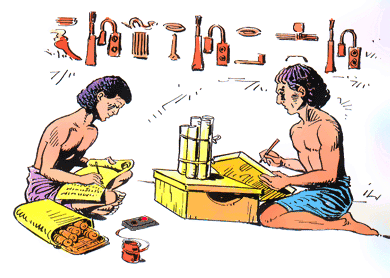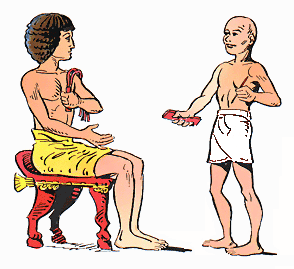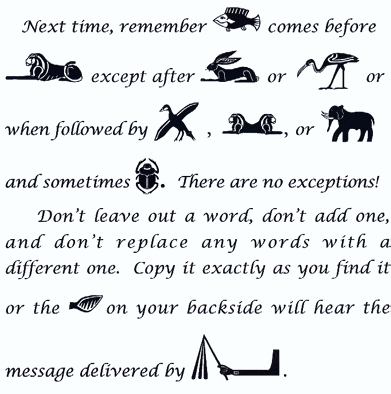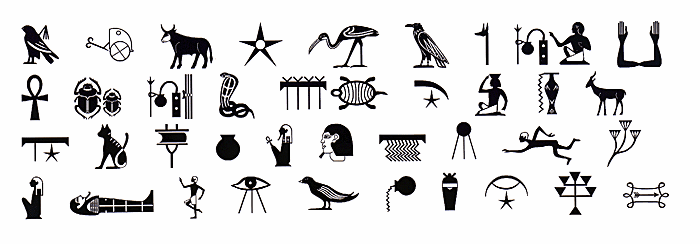Egyptian Schools for Scribes Inflicted Ten to Twelve Years of Intensive Training and Discipline on Those Who Desired the Advantages of This Profession, Part 1Early Egyptian governments were highly centralized and employed a large number of official scribes so that the development of writing skills would have been “an essential key to a life of ease and security.” It wasn’t difficult for parents to see that the hard life of the uneducated peasant and soldier was so vastly different from that of the scribe and scholar. One high-ranking Egyptian official advised his son to “love letters” for through their knowledge “you may protect yourself from hard labor of any kind, and be a magistrate of high repute.” High official, and even princes, often had themselves shown in writing postures with papyrus and brush or reading from an opened roll to give the impression that they could write and read—even when they were illiterate.  in Egyptian societies; however, it was a difficult vocation to achieve. The schools for scribes included students with a variety of skills, from beginners to advanced levels. Neither girls, nor boys from poor families, were ever permitted in scribal schools. Usually a boy started in a religious-temple school at the age of five to begin his ten to twelve years of education as a professional scribe. All the students wore short plain loincloths of white linen wrapped tightly around their hips. All pupils and teachers had their heads shaven. Although the school instructors were dressed in the same fashion, they word a stiff black wig on their bald heads as a symbol of dignity and position. Teachers would whip their pupils if they grew sleepy in the heat or if they didn’t pay attention to their assignments. There was an old Egyptian proverb that said: “The ear of the boy is on his back and he harkens best when he is beaten.” In addition, they had to practice on broken pieces of pottery or wood with ink and the reed pens they learned to make for themselves. Papyrus was too expensive and rare for beginners to use.    The scribe had to memorize about 700 hieroglyphs, such as those shown above, which had to be “drawn exactly without changing in the slightest degree.” A few of the hieroglyphs are shown here, some of which are “ideographs” and some of which are “phonograms”. The ideographs are believed to have been determinatives that added meanings to the phonograms that were phonetical images, or sound-picture “letters”, used to create words.  If you want to see more about the history of the anient scribes, then go back to search results page for scrib so you can see the "Professional-Egyptian scribe story, Part 2". If you want to see more about the history of the anient scribes, then go back to search results page for scrib so you can see the "Professional-Egyptian scribe story, Part 2".You may return to the Scrib, Script list to see those words again, if you wish to do so.
|
